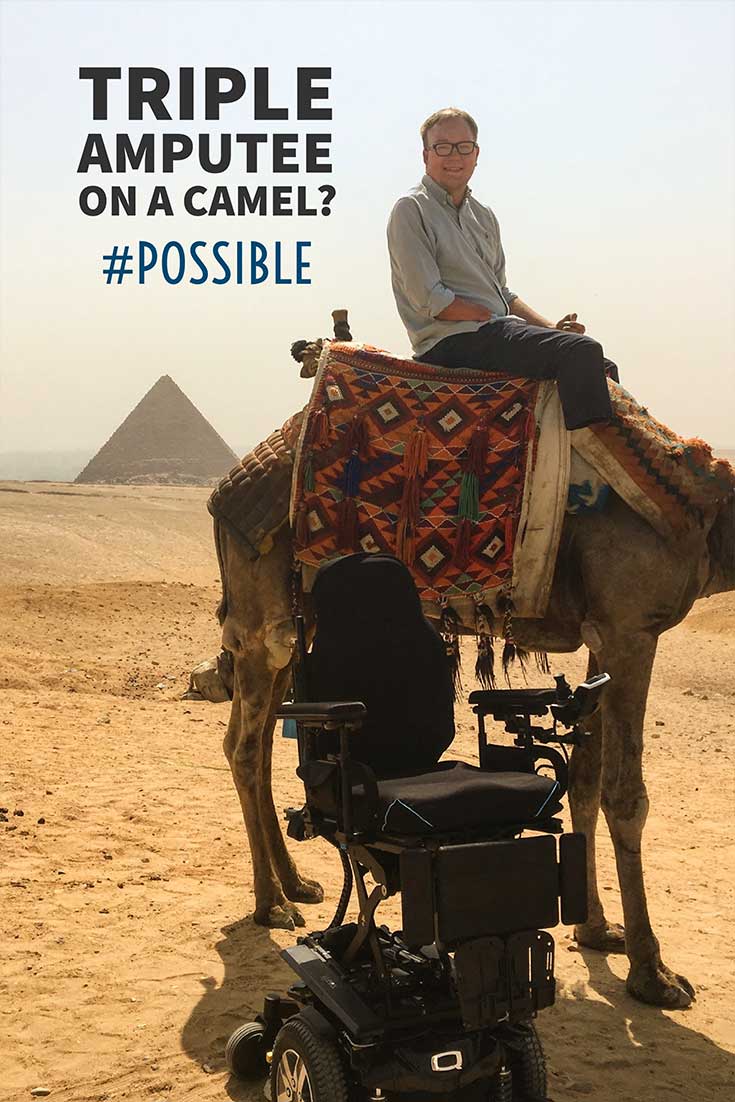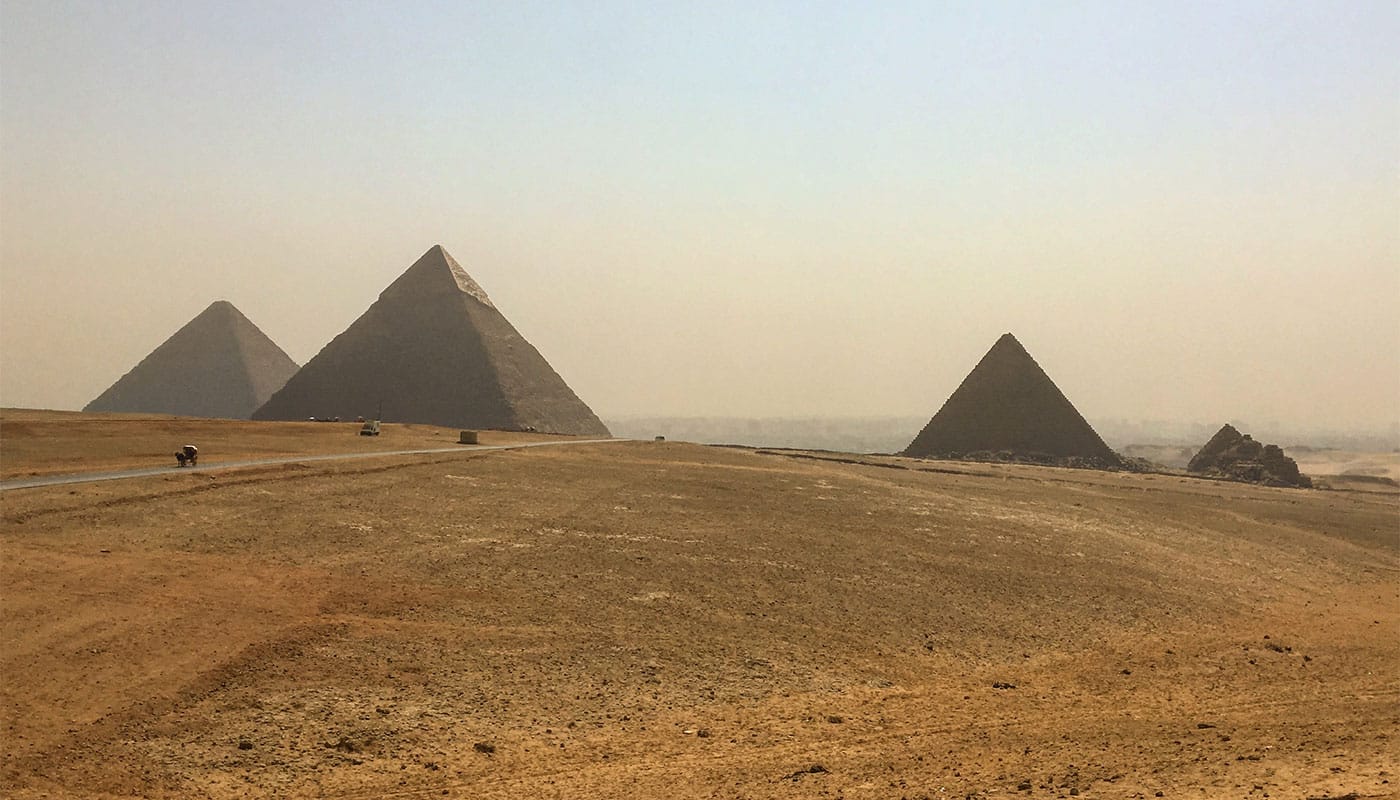One of the Seven Wonders of the Ancient World, the Great Pyramid of Giza sits in the midst of two smaller pyramids and the Sphinx, just miles outside of Cairo, Egypt. Now more than 4,500 years old, the Giza Pyramids have stood the test of time and are among the greatest architectural accomplishments in human history. Thanks to the development of Giza into a major tourist attraction, wheelchair access is possible, albeit on a limited basis.
When visiting this UNESCO World Heritage Site earlier this month, I arranged transportation via London Cab Egypt, the only wheelchair taxi company in Cairo.
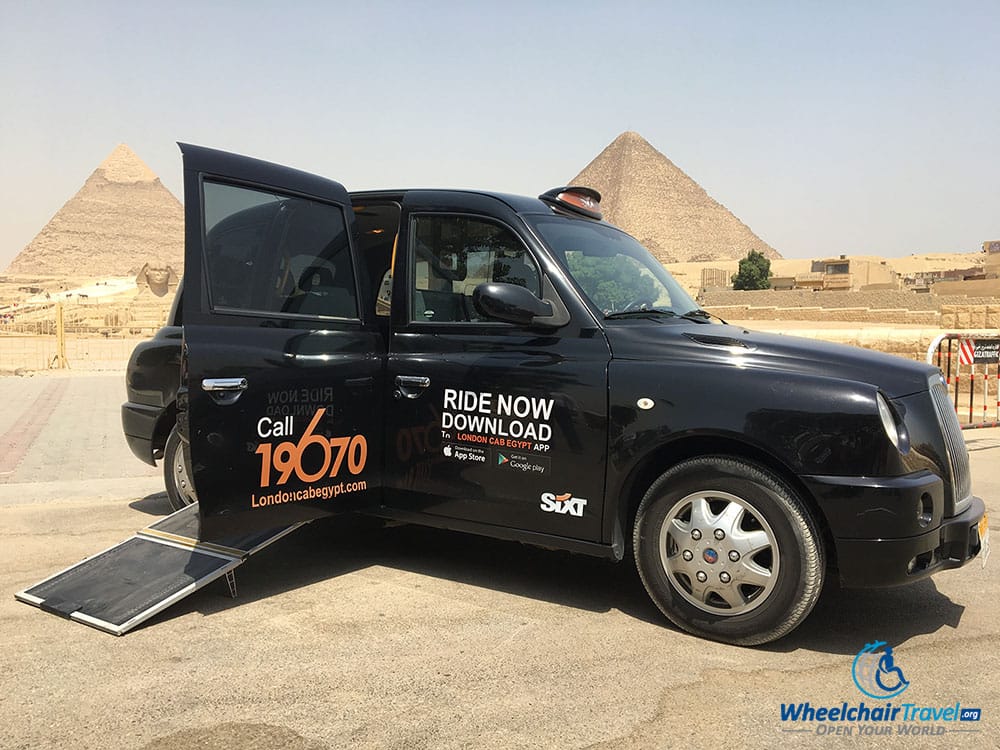
I chose not to hire a tour guide to join me, as I wanted to explore every inch of the Giza Pyramids Complex to check for wheelchair accessibility. You’ll learn much more about the history of the pyramids through a simple web search, or by purchasing the Lonely Planet Egypt guide book. Paved roadways throughout the site make much of the taxi ride smooth and visiting in a wheelchair possible.
The Pyramids of Giza
The Pyramid of Khufu or Pyramid of Cheops, which is the largest in Egypt, was built to a height of 481 feet tall and served as the final resting place of the fourth-dynasty Egyptian Pharaoh Khufu. Its immense size made it the world’s tallest man-made structure, a title it held for almost 4,000 years. These days, the world’s tallest buildings and towers are lucky to hold the title for a decade. But four millennia? Wow.
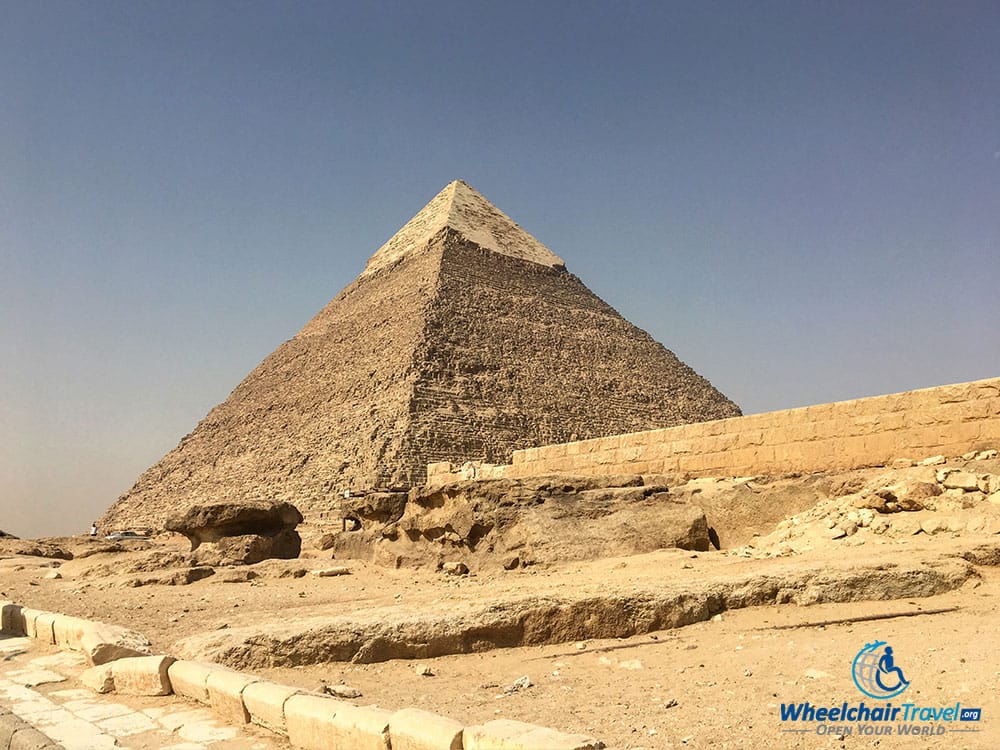
The second largest pyramid, which actually appears taller than Khufu (its foundation is built at a higher elevation), is the Pyramid of Khafre or Chephren (pictured above). It was built as the burial site for the pharaoh Khafre, who was the son of Khufu and ruled from 2558 to 2532 BC. The angles of Khafre are steeper than the other Giza pyramids, and a portion of the exterior covering remains at the structure’s apex. When the pyramids were originally constructed, they would have been encased in a smooth stone – granite marble, limestone, etc. After thousands of years, those coverings have worn away to reveal the rough interior structure.
Able-bodied tourists are able to go inside the pyramids, into the excavations and opened chambers, but these are not wheelchair accessible. For the wheelchair traveler, the views are limited to the outside of the pyramids, but the streets and partially accessible sidewalks can get you fairly close to Khufu and Khafre. In a certain area, it was even possible to touch the foundational stones of the pyramid. I recommend driving around the Giza complex, hopping out when you find a nice picture-taking opportunity.
Sphinx: Lion or Pharaoh?
Just across from the Pyramid of Khafre is the Great Sphinx of Giza. I had read previously that it is much smaller than one might expect, but I was still surprised by its relatively short stature.
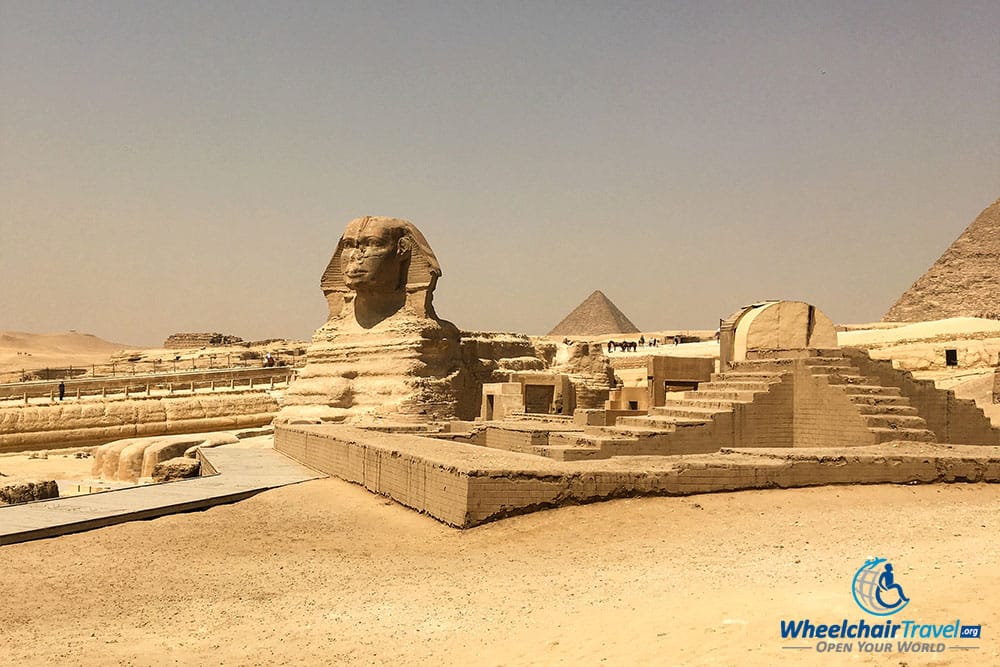
The Sphinx stands only 66 feet tall, which makes it appear miniature in front of the 448-feet tall Pyramid of Khafre. Like the pyramids, its preservation is remarkable, given that it is also more than 4,500 years old. While the degradation of the body is quite extreme, a large part of the face remains, as does the right front paw.
Camel Rides!
I have a fascination with camels, and have dreamt of riding one for as long as I can remember. Although I had planned a camel ride during my first trip to Dubai and the Middle East, I decided to save it for this trip – to the Pyramids in Egypt.
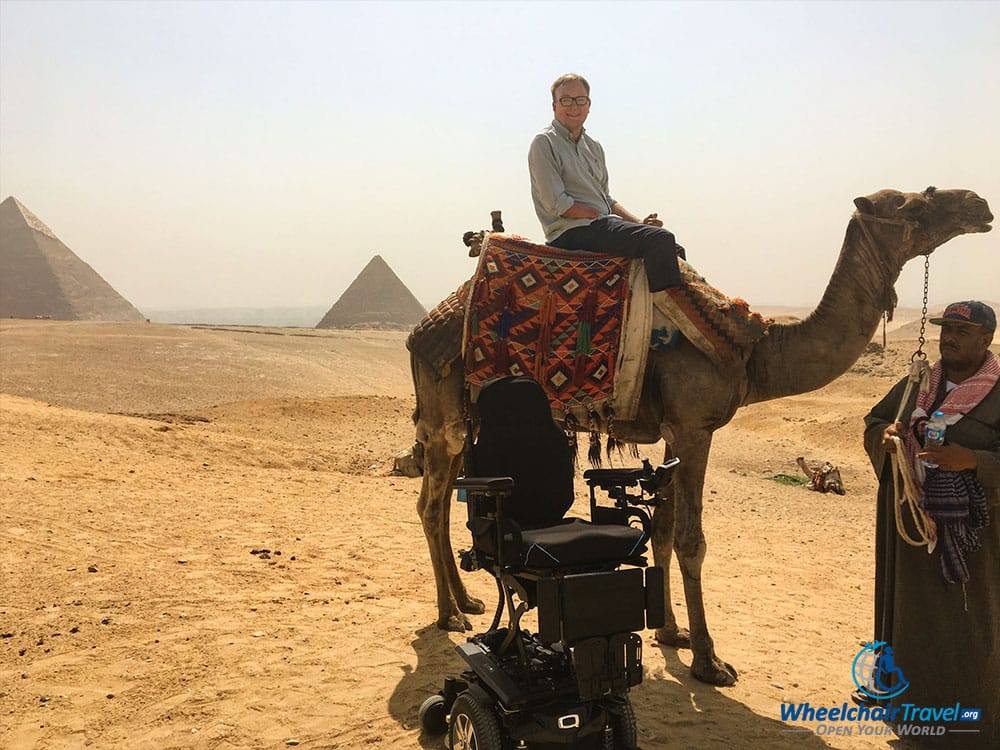
Less than a week before my trip, my new wheelchair arrived — the Quantum Q6 Edge 2.0 with iLevel technology. iLevel allows me to raise the seat of the wheelchair an entire 12 inches, which made transferring onto the camel’s back easier and much safer. Thankfully, you can “board” a camel while it is laying down, so you won’t have to climb aboard when he (or she) is standing at his/her fully-grown height of about seven feet.
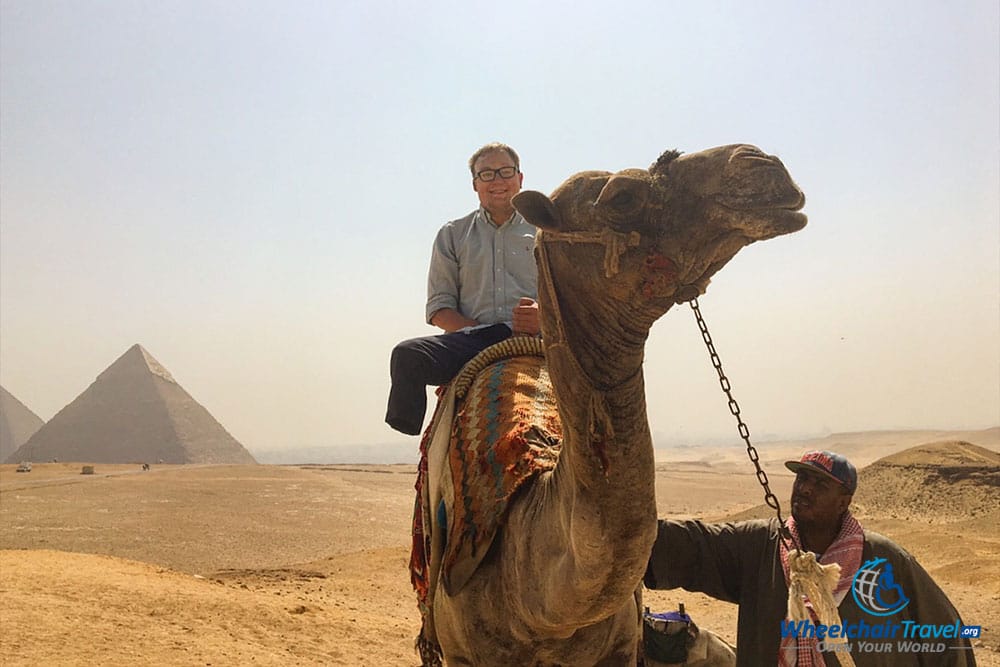
Riding a camel in Egypt with the pyramids in the background provided a much better photo opportunity than I would have had in Dubai, and I took advantage!
If you are a wheelchair user and have an interest in riding a camel at the Giza Pyramids, be sure to negotiate the price before you so much as touch the camel. Giza can turn into a tourist trap for those who are uninformed. I agreed to a price of 250 EGP (~$14 USD) for a 15-minute ride, and made sure to insist that the price included a right to take as many photographs as I wanted. My London Cab Egypt taxi driver, Ahmed, was kind enough to serve as my photographer. While $14 was a great deal, it is important to negotiate, as I’ve heard of other tourists being taken for $100 or more!
You should also know that camels are pretty wobbly, especially on the uneven terrain of the Egyptian desert. I was holding on for dear life the entire time! You’ll be most at risk of falling off when the camel stands up and lays down, but I found learning forward offered some extra stability. The camel’s owner will be able to guide the animal, so pass along your desires (i.e. slow down!) throughout the ride. Be safe out there and enjoy the ride!
Sound & Light Show at the Pyramids
Each evening, when the sun sets, the pyramids are transformed into the backdrop for an impressive sound and light show. The hour-long program introduces tourists to the history of the pyramids and Ancient Egypt. The cost is 100 EGP ($6 USD) and tickets can be purchased upon arrival.
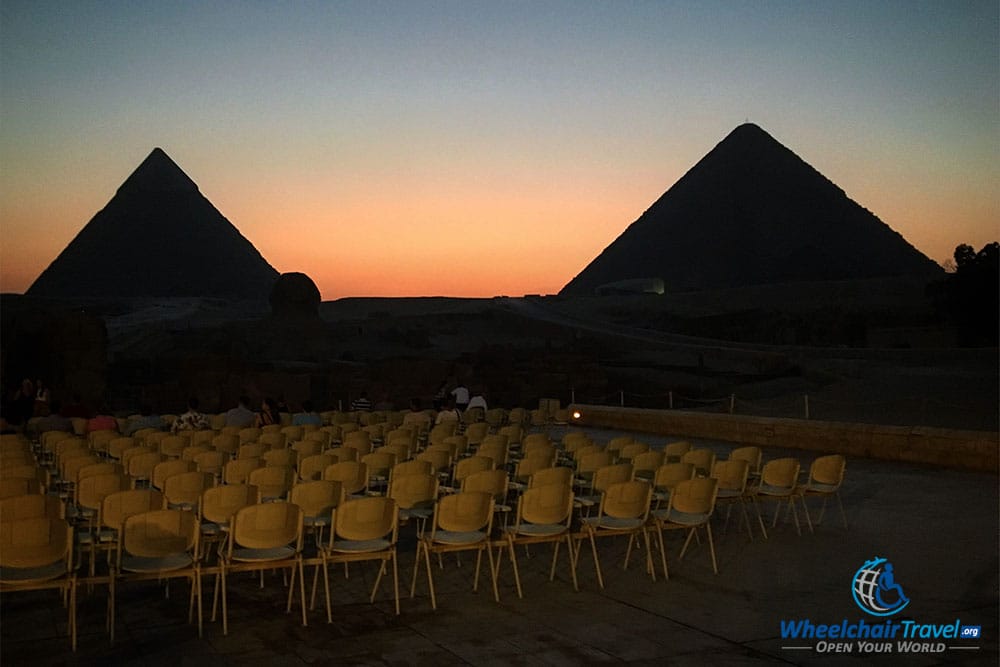
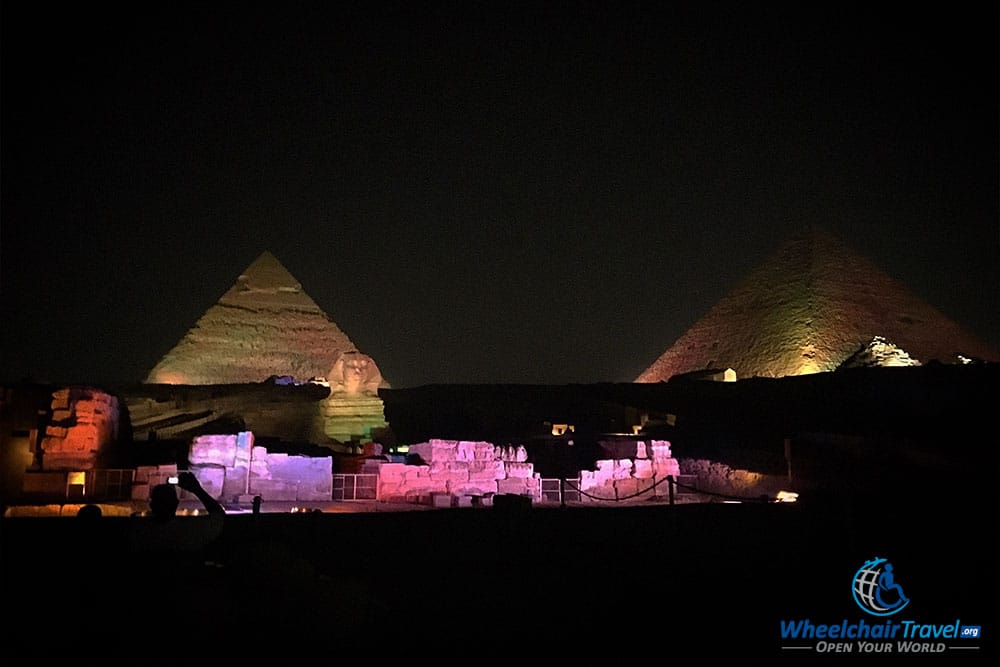
Wheelchair users are allowed to sit in the front row, and the seating area is wheelchair accessible courtesy of a ramp. You’ll be close to the Sphinx, and have a great view of the lights as pictured above. The audio is played loudly, but those who are hard of hearing may have difficulty.
Although the performance required an extra trip to the Pyramids in the evening, I did not have to travel very far, as my hotel was located only a ten minute drive away.
Final Thoughts
When you roll up to the pyramids, prepare to be awed. Keep in mind that these structures were built without the aid of complex or modern machinery, during the period of 2580 to 2560 BC. That’s Before Christ – a very, very long time ago! So long ago, in fact, that it’s difficult to comprehend. If you get caught in a cycle of thought surrounding time and human existence, don’t feel bad. I wasted at least an hour, lost in my mind and trying to make sense what was right in front of my eyes.
My trip to the Pyramids of Giza is one that I will never forget. The magical beauty and the opportunity to ride a camel in a place of such significant history was priceless. Even more amazing was the fact that I was able to touch 4,500 years of history with my own hand. It’s one of those things you have to do once, but I’m already hoping for a repeat visit!
Share the good news of what’s possible in a wheelchair with your friends on Pinterest!
